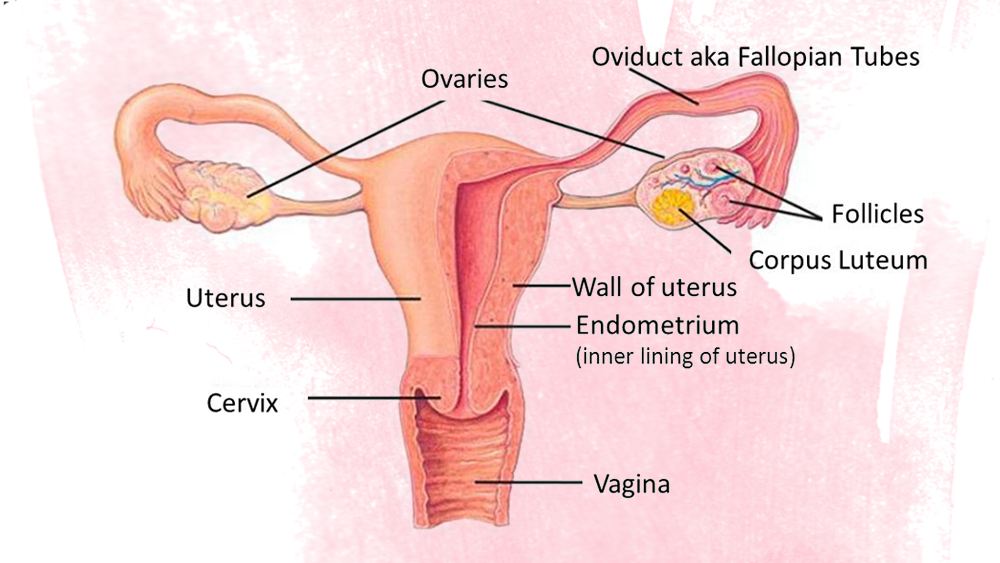Business. Health. Fertility.

Health as a fundamental component of happiness and success, is getting more and more attention in our modern life. We can say, that health has become part of the business, or in a certain sense, a business by itself. Let us look at the specific question of health – reproductive health, fertility.
The term “fertility” increasingly appears at the hearing and drew the attention that requires us to understand its meaning. Fertility (from the Latin “fertilis”) – is the ability of mature organism to create viable offspring. So, what are the today’s fertility aspects, especially for women?
Women’s fertility – the ability to become pregnant.
From birth, the female body gets about 300 thousand of possible female sex cells – follicles – fertile “strategic” reserve. More often, people are actively building a career and consciously pushing the first pregnancy after 30 years old, when already oocytes got «life-influence». With age and the number of ovulatory cycles (cycles in which follicle grow to oocyte-complete sex cell of woman that can be fertilized), as well as by the influence of adverse factors, the number of eggs decreases rapidly, which may lead to reproductive health problems.

Basic knowledge
As already mentioned, at the birth of girls the ovaries contain about 300,000 potential eggs – oocytes. Although there are exceptions: it can vary from 35 thousands of cells in some baby girls, up to 2 million for others, genetically. In any case, their number is reduced much faster than previously thought. So, at 30 years a woman has on average about 12% of the original stock of follicles, and after 40 – only 3%. Thus, many women are mistaken in thinking that they remain fertile until they menstruation occurs. On average, the ability to conceive a girl (in European countries) comes at 11-13 years in adolescence, when the first menstruation occurs (even if ovulation is not yet scheduled in this period). And it ends by around 58-62 years (middle age, when the statistically comes menopause. In general, the reproductive potential of each woman depends on a combination of genetic characteristics, lifestyle and habits, as well as the health status at the time of conception.
Just think and you will get surprised, every healthy baby girl, woman, mother is the connection of three generations. Just open your imagination, when the grandmother was pregnant with the mother, in her embryonic ovaries there was already the potential cell from which subsequently appeared the granddaughter (or grandson). Here’s how! Women, that visit me for pregnancy preparing still ask: — “Doctor, if I do not smoke 2 months before pregnancy, it is enough to prepare my egg for fertilization?” Judge for yourself now what shall I answer, according to “generation connections” 🙂
An important periods.
Lets have short review for an important phases for fertility. A woman’s fertile period is conventionally divided into stages. Early reproductive stage starts at puberty and lasts up to 18 years. Normally, within a year after the first menstruation, cycle becomes regular (23- 32 days, counting from the beginning of menstruation). Ovulation in this period is often spontaneous, but the probability of conception in the management of sexual is high.
Use of nicotine, alcohol and drugs during this period adversely affects the reproductive glands that has not yet established stabil function connection – so majority of toxic factors can easily influence the future ability to conceive.
Long reproductive stage occurs during the period from 20 to 40 years. The menstrual cycle is stable and hormonal parameters are stabile as well. However, about 1% of women under the age of 40 years may have menopause.
The late reproductive stage comes from 40 to 47 years. Even with the hormonal “hops”, ovulation and menstrual cycles are within the regular scheme, but the body is already beginning to rebuild. In the late stage of fertility whoever wishes to become pregnant may require some pharmacological support. Any late pregnancy needs to be accompanied by the mandatory detailed medical and genetic screening to avoid fetal pathology.
In the final period, between 47 to 58, the extinction of reproductive function takes place, as manifested extremely rare ovulation. Although, it is related to ovarian reserve, which is genetically programmed and individually lasts.

When it happens?
So, when is the most favorable phase for conception? It starts 48 hours before ovulation and ends in 48 hours after that. This time includes 12-14 hours, during which the egg retains the ability to fertilize. But do not think that everything is so fast: sperm, trapped in the cervix for 48 hours before or after ovulation, retains the ability to fertilize the egg up to 3 days.
In practice, this means a fertile phase lasts around 3-6 days (often from the 12th to 18th days at 28-days menstrual cycle).
Main list of the required conditions for normal fertilization:
- the cyclical release of an egg from the follicle (ovulation);
- the fallopian tubes – open and well functioning as a place to fertilize the egg in by sperm cell;
- normal cervix and uterus conditions to ensure the active promotion of sperm towards the fallopian tubes;
- favorable state of the endometrium – the inner layer of the uterus (glandular), necessary for engraftment of a fertilized egg;
- a sufficient number of normal sperm cells in the ejaculation (normally around 3 millions for ml), concentrated in the vicinity of the cervical canal;
- balanced status of the immune system not to «aggress» the fertilized egg as a new product in female body;
- hormonal and PH-balance in female body to support ovulation and fertilizing of cell;
- structurally normally sex cells as well as genetically properly combined.
According to global research, 60% of couples conception happens within the first 6 months of regular sexual life without contraception. Another 20% may conceive within a year; 10% – within two years. The remaining 10% are considered to be barren (of which only half seek treatment, and even less – start it).
Spheres of influence
As mentioned above, female fertility depends on a complex of factors, many of which, but not all, can be positively influenced.
- Absence of bad habits. This factor comes on the top of the list (or you can say “is the most important”). Because, for example, smoking (both passive and active), as the most common form of addiction, reduces both male and female fertility. Smokers male sperm activity appears 17% lower than non-smokers. Also, recorded cases of infertility and miscarriage, are often among women who smoke.
- Physical activity. It improves blood circulation in the body, promotes tissue oxygenation and prevents stagnation in the pelvic organs. It also enables adequate blood flow to the sexual glands, which in turn, contributes to their active cyclic function.
- Physiological diet. It has a direct impact on health. The lack of essential trace elements and vitamins in the body has a negative impact on ovulation and spermatogenesis processes. For example, vitamins C and E are affecting both female and male fertility. For women, they are “helpers” for hormonal synthesis while for men they significantly increase sperm motility.
- Stress. Despite the fact that the dependence of stress on fertility is not so actively discussed as the negative effects of smoking and alcohol are, we should not forget that it exists. Stress is a factor for violations of adaptation in general, which affects the reproductive system. More and more studies show that stress reduction has a positive effect on the ability of couples to conceive a child.
- Sleep. Sleep deficiency adversely affects the fertility in both sexes. A woman with a constant lack of sleep, may have menstrual cycle disturbances which have a negative impact on the reproductive function. The issue are hormones – cortisol level change, leptin, insulin, dopamine, that are responsible not only for stress, pleasure, appetite and body weight, but also affect female fertility. This is a list of things – not a complete number of indicators of a healthy way of life – that is necessary to maintain and enhance the ability of fertilization. They should also include the prevention of inflammatory and infectious diseases of the reproductive system and regular sex with a healthy sexual partner, as well as feeling of inner happiness, safety and positive way of thinking.

What about men?
Men’s fertility – the ability of a man to impregnate a woman. The concept of male fertility is reduced to quantitative and qualitative characteristics of sperm. And if within the age man, still full of strength and energy to transfer its DNA, but the quality of sperm cells can suffer – the probability of deformation of sperm becomes higher with age, as well at the average, ejaculate may be 30% reduced with volume.
The ability of male fertility depends on sperm quality – an amount of cells, activity and normal structure of cells (every sperm cell should consist of 3 main parts – head (with DNA), neck and tail, and each part is functionally important).
However men are undoubtedly lucky in their ability to update germ cells quickly. Spermatogenesis – (the process of sperm production), in healthy testicles is a constant process (every 72 hours cells are partly rejuvenated and every 72 days there is a complete upgrade of the sex cells). Therefore, by paying more attention to their health and adjusting lifestyle, men can greatly affect their fertility, increasing the likelihood of fertility.
When it comes to determining the degree of male fertility, there are difficulties associated with the male ego. Gynecologists can hear from patients that their husband refuses to be examined. Actually, men are reluctant to be tested. Women, for the most part, on the contrary make it a very decisive manner. Some of them believe so firmly in the power of their husband, that do not see the need for his inspection. The examination algorithm for infertile couples begins with a survey of men for several reasons: firstly, according to statistics from several regions, male infertility percentage varies from 40% to 50% among the applied couples. Secondly, examination time is much faster and examinations are less costly for men. Examination and treatment of male sex and fertile problems are engaged in urology and andrology. The check-up consists of study of the quality of semen, ultrasound examination of the prostate and PCR (type of laboratory tests) for sexually transmitted infections.
Planning of pregnancy is always a task for two – for the couple, so when planning a pregnancy, the couple can get professional advice from gynecologist or family doctor. In conclusion, one of the the best solutions for maintaining a long fertility is a rational attitude to health from the very beginning of life. Be well and teach your kids to do it.
The creation of healthy traditions in the family and their transfer by inheritance create a strong and healthy society, so keep an eye on your health-business.